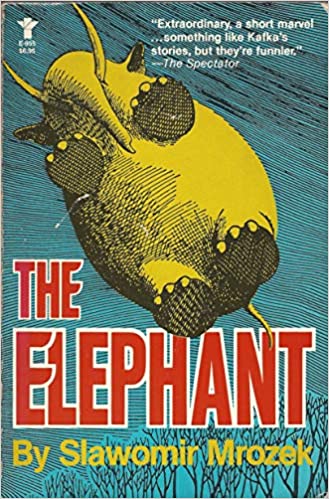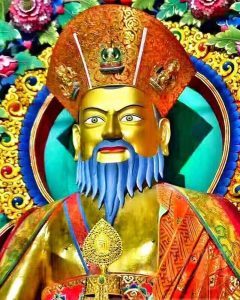Chapter Three
ü By 20th century, Bhutan embarked
upon a new phase of its History
ü The theocratic government got replaced with
the installation of Ugyen Wangchuk as the First hereditary King of Bhutan.
ü Bhutan experienced a new era with the problem happening in the
North and the South
ü Bhutan was sandwiched by Tibet in the north
and India in the south. This
geopolitical setting of Bhutan posed a threat.
o
Chinese
occupied Tibet.
o
British
occupied India.
ü Under these circumstances, Ugyen Wangchuck
became conscious of strengthening the British friendship to prevent Chinese
advents into Bhutan.
ü This idea was appreciated by John Claude
White, Political Officer for Bhutan and Sikkim and he recommended the British
government in India to take interest in Bhutan.
ü Ugyen Wangchuck accompanied the British in
1909. This resulted in the signing of Treaty of Punakha in 1910.
ü Under this treaty, British promised the
following conditions:
i)
Never
to interfere in the internal affairs of Bhutan.
ii)
Bhutan
should get advice from British government regarding her external affairs. Ugyen
Wangchuck realized that this friendship was to continue even after the British
had left the Indian soil.
Possible threat to the Monarchy:
The reign of king Jigme Wangchuk can be describe as an era of
unification and consolidation of Bhutan. His reign was also a period of
national integration and of extending friendly relations with the neighboring
countries. The consolidation of political power and the centralization of
authority were largely domestic. They were necessary to ensure that the newly
acquired domain and the political system did not break down and that the
country did not relapse into chaos and turmoil of the preceding centuries. Yet
his reign was not without threats
i)
Dorji Rabten Factor:
ü The British government and Ugyen wangchuk
visualized the threat from his son inlaw Dorji Rabden, husband of Peldron.
ü The king had expressed his willingness to
accept his son inlaw as his heir in 1900 after the death of his three sons and
wife Ashi Rinchen.
ü But in 1905, Jigme Wangchuck was born to Ashi
Tsundrue Lhamo (Lemo).
ü Ugyen Wangchuck felt that Dorji Rabten could
challenge the throne for his son Tshering Penjor.
ü When Jigme Wangchuck was installed to the
throne on 14th March 1927, Tshering Penjor became Paro Poenlop and
there was no threat to Ugyen Wangchuck.
ii)
Zhabdrung Factor:
ü The other danger posing an threat to the
throne emerge in the yearly years of 1930s.
ü The 6th mind incarnation of Zhabdrung,
Jigme Dorji was born in Domkhar Melong in Tawang, Arunachal Pradesh, India.
ü People invited him to Bhutan to Talo. And
shortly after problem emerged when
ü Zhabdrung without the permission of the King
gave grazing rights to his family, Melongkhar in Tawang.
ü The King objects this and ceased the grazing
rights.
ü Choki Gyaltshen, cousin of Zhabdrung asked help
from Mahatma Gandhi in India to restore his power
ü Gandhi refused to help because Bhutan was
supported by British and Gandhi was also busy in the movements.
ü In November 1931, Zhabdrung was found dead at
Talo and the possible threat of Zhabdrung came to an end.
Ties with India (During the Third King’s Reign):
ü By 1950s rapid development was taking place in
Asia, so Bhutan couldn’t ignore it even if she wanted to
ü The British had left India, chinese had
entered into Tibet and Nepal too under the rule of Ranas had entered into a new
phase of international relations by ending the policy of isolation.
ü Third King Jigme Dorji Wangchuck ascended to
the throne in 1952. And he had to accelerate Bhutan’s move towards securing a
rightful place in the modern world.
ü In 1958, Prime Minister of India Jawaharlal
Nehru visited Bhutan. He gave the idea
of Five Year Plan to develop Bhutan.
ü On 28th August 1959 Nehru stated in
the Lokshaba (Lower House) that the Bhutan was the responsibility of the
government of India.
ü This was the first step towards the planned
economic development.
ü In 1968, Prime Minster Indira Gandhi visited
Bhutan and she stationed a representative of Indian government in Thimphu and
representative of Bhutan in New Delhi.
ü Lyonpo
Pema Wangchuk was
the first Bhutanese Ambassador to New Delhi and Mr. B. S. Das was the first Ambassador of India to Bhutan.
Political Reforms (During the Third King’s Reign):
i)
The Tshogdu:
THIRD
King instituted Tshogdu (National Assembly) in 1953.
ü Tshogdu is the chief legislative organ
(lawmaking body) of the country.
He instituted Tshogdu
because:
a) To develop the Political Consciousness among
the people.
b) To introduce a representative of people in the
political system.
c) To suit the needs of Bhutanese people.
d) To increase people’s participation.
The
Members were:
a)
105
elected representatives of the people.
b)
10
representatives of the clergy.
c)
39
nominated representatives of the government.
ü The members served for a term of three years.
ü They can be reelected.
ü In 31st session of the Assembly in
May 1970, King proposed radical changes that was a vote of confidence in a King
through secret ballot every three years for removal of King by a simple
majority and formation of a Regency Council of Four Members – One from Royal
Family, One from Monk Body, One Official from Government and One elected by the
Assembly.
ü All proposals were passed accept for the
King’s removal have to be supported by 2/3rd of the member.
ii)
The Lodroe Tshogde:
ü It is the Royal Advisory Council.
ü It was set up in 1963 but constituted in 1965.
ü The members were Zhung Kalyon/Kusthab, Six
representatives and the two clergy.
ü Zhung Kalyon is the representative of the
King.
ü He holds the rank of deputy minister.
ü Other representatives hold a post of grade I
(Secretary) for three years and clergy for one year.
The main duties of Lodroe Tshogde:
i)
To
advise the King on important matters.
ii)
To
advise Council of Ministers on important matters.
iii)
To promote
national interest, welfare of the people and national security.
iv)
To
implement the laws and resolutions passed by the Tshogdu (National Assembly).
v)
Commands/Comments
of His Majesty are the final court of appeal.
iii)
The Lhengye Zhung Tshog:
ü It is also called Council of Ministers.
ü It is the oldest institution because it
existed even in the 17th century as Lhengye Tshog (State Council).
ü Lhengye Tshog consisted of Desi, Zhung
Dronyer, Zimpon, three Poenlops and three important Dzongpons.
ü The head was Zhung Kalyon.
ü In 1968, Third King reformed the Council of
Ministers.
ü It was headed by King and comprised of
Ministers, Deputy Ministers and the member of the Royal Advisory Council.
iv)
The Judiciary:
ü
High Court (Chief Justice +
5 Judges)
|
Jabmi/Attorney
|
ü Dzongkhag Court (Judge + Sub-divisional
Officer)
ü Dungkhag Court (Sub-divisional Officer)
ü Gewog Level (Gup)
ü Bhutan’s legal code is based on what was laid
down by Zhabdrung Ngawang Namgyal.
ü High Court was established in 1968.
ü Judiciary was separated from executive in
1968.
ü In High Court, Judges are appointed by King on
the recommendation of Chief Justice.
ü The important features of our judiciary are
the Jabmi/Attorneys which we use to argue the cases in all the level of courts.
Economic Reforms:
ü For the last many centuries, people of Bhutan
remained isolated, undeveloped, primitive and feudal society.
ü Third King was convinced that to develop
agriculture, education, transport and communication will be difficult to
achieve in isolation.
ü Therefore, to break the isolation he launched
Five Year Plan in 1961.
ü It was actually implemented during the visit
of Pandit Jawaharlal Nehru in 1958.
ü The highway between Phuntsholing to Thimphu
and Thimphu to Paro was started in 1960.
ü To start Five Year Plan, the technical people
of Planning Commission of India visited Paro in 1961.
FIRST FIVE YEAR PLAN (1961)
ü India provided the largest aid of Rs. 100
millions.
ü The budget was allocated for the development
of roads, education, transport, health, forest, agriculture, power, animal
husbandry, industries, etc.
ü India started a unit of a border road
organization in Bhutan known as DANTAK to construct and maintain roads.
ü The achievement of this plan was construction
of 1770 km of roads, a health
department in Thimphu and agriculture department, forestry and postal.
ü The Bhutanese postal stamp was issued on 10th October 1962.
SECOND FIVE YEAR PLAN (1966)
ü India provided the aid of Rs. 221.5 millions.
ü This plan further developed agriculture,
education, road, health and transport.
ü In communication division, a philatelic wing
was set up and Bhutan became the member of Universal Postal Union in March
1969.
ü In International philatelic exhibition in
Kolkata in 1969 to 1970, Bhutan won a gold medal.
ü Banks were set in 1968 in Phuntsholing and
Thimphu.
ü Tikchung (a new coin) was introduced and
brought an end to barter system.
THIRD FIVE YEAR PLAN (1971):
ü The total revenue was Rs. 355 Millions.
ü Government contributed Rs. 25 million from its
own resources.
ü Corporative marketing societies, power,
industries, mining, transportation, etc were further developed.









0 Comments